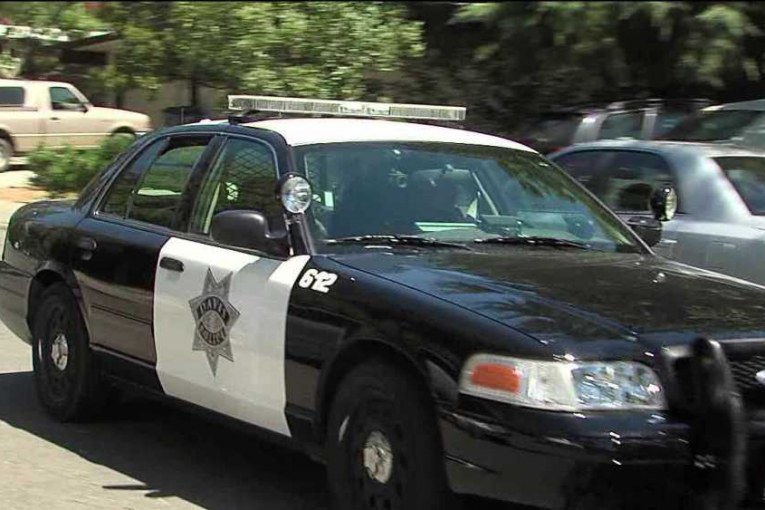

By Emily Dill
DAVIS — Anger and disappointment echoed throughout public comment in response to the Temporary Joint Subcommittee’s motion to include a “status quo” model option in their recommendations for City Council on re-envisioning public safety during the Nov. 18 meeting.
While there was immense appreciation and gratitude toward the subcommittee for their work on the previous eight recommendations in the report, the meeting was overridden by disagreements and strong emotions regarding the ninth proposed recommendation.
The ninth recommendation in the report was to “commit to a vision of re-imagined public safety,” and consisted of three broad visions for Davis: (1) “New Programs (NP)” (2) “New Department (NP)” (3) “New Structure (NS).” Social Services Commissioner Bapu Vaitla provided the council with a visualization model to help conceptualize these different visions.

This last recommendation consumed the majority of Wednesday night’s meeting and Vaitla stated this was “at the core of why this subcommittee was convened.” The idea behind these three options was to provide the City Council with a “menu” of options.
Police Accountability Chair Dillan Horton was the largest voice against the NP recommendation, emphasizing that “it wouldn’t be appropriate for us to put the New Programs option alongside New Department and New Structure” and that the differences here are so apparent that NP isn’t even “in the same family of proposals.”
Following Horton’s suggestions to remove the NP approach from the recommendations due to its failure to target the issues that this committee was designed for, Social Services Commissioner Matthew Wise voiced his disagreement saying, “I don’t view it as not addressing our concerns with systemic racism or any of the other important topics that we raised in this document.”
Human Relations Commissioner Emma O’Rourke-Powell continued with this “menu” metaphor, stating her opinion of NP was to let it remain because “there are things at a restaurant that I would prefer never to order, but that doesn’t mean they’re not there at the restaurant available.”
Horton held strong on his stance, emphasizing that whether or not it is on the “menu” the city already knows it is an option, it is the option to remain with the status quo. Horton emphasized his concerns of “why we, as the group tasked with bringing forward reforms, would include in our menu of options what is essentially the same as what is going on now.”
After a lengthy discussion on this NP approach, a motion was made to keep the recommendation the same as written but include three additional sentences explaining that the subcommittee felt the NS was the most promising.
The motion passed without consensus — Horton being the singular vote against.
Following this, the public took control of the meeting, emphasizing their anger, disappointment and confusion.
Public comment regular, Morgan Poindexter, encapsulated the echoes of all public commenters of the night by simply stating this vote was a “disservice to the people of the community.”
“I’m pretty tired of listening to a person of color [Horton] directly tell you over and over exactly what needs to happen, what the experiences are, how this reimagining public safety needs to happen and then watching other white members of this committee just walk all over that,” Poindexter emphasized.
Another commenter, Connor Gorman, addressed the subcommittee’s reference to these approaches being “menu options,” by stating that “menus should only have things that are good, even if people disagree on which is the best. So, for me, two [ND] is the food that I would order, three [NS] is something that can be on the menu even if I wouldn’t order it, one [NP] is rat poison and should not even be on the menu.”
This portion of the meeting consisted of similar comments, stating, “You just didn’t come through for us with that vote,” and calling the vote “traumatizing honestly.” Some commenters, like Francesca Wright, addressed how the committee collected so much data on these issues, addressing, “You documented the racism, you documented all of that,” and emphasized that now they must do something about it, and the NP approach is the opposite of change.
Commenter Jordan Varney touched on conventionally uncomfortable topics, “I am a white person, and to my fellow white people on this subcommittee, if we are white we don’t get to define what systemic racism is. We don’t know what it is, we don’t experience it.”
Varney continued to emphasize that “racism exists in all spaces, like in police departments, but it also exists in this space, in this joint subcommittee.” She spoke of how “white people need to be sure that you are not enacting racism. By actively listening to people of color in the room, you should be understanding that they come with lived experience.”
Directly following the public comment, Commissioner Vaitla created a new motion to remove the NP approach from the menu of options, but rather list it in the text as the “status quo” route that they do not believe to be in the best interests of the city.
Social Services Commissioner Susan Perez, who chaired Wednesday’s meeting, stated her shift of perspective of putting the NP option on the subcommittee’s recommendation “is contradictory to what we as a commission have found in our own research, and are trying to work against.” Perez supported Vaitla’s motion.
Commissioner Matthew Wise defended his original stance, that the recommendation, including the NP approach, was fine as written. He addressed the tension from the public comment by stating that these comments were “from a particular segment of interested parties, and there are a lot of other interested parties that haven’t even gotten a chance to take a look at this document.”
The decision the subcommittee ultimately decided on was Vaitla’s motion, with various added text and edits to ensure the recommendation reads NS and ND as the two broad visions, and that the course of action Davis has been embarking on already is NP.
This motion passed unanimously, while tensions amongst the temporary joint subcommittee were still quite evident.

Emily Dill is a fourth year Political Science student at UC Davis, also minoring in Professional Writing and Environmental Policy.
Do I understand the narrative, correctly?
The action was taken prior to “public comment”? Public comment took place after staff/sub-committee discussed and voted?
Yeah, no problem there! Transparent as H*&&, and very participative…
Or, is the time sequence of the narrative wrong?
If the time sequence of the narrative is correct (as I’ve read it, twice), there is something rotten in Davis… or with some individual(s), “who would be ‘monarch’…”.
Either the account, or the real meeting, “sniffs”… one, or the other, and potentially, both… and it appears my thoughts on the substance does not matter… so I won’t waste energy opining as to the substance…
I note that author of narrative cites, (1) “New Programs (NP)”, but graphic cites, “New Practices”… perhaps as one would say, “a difference without a difference”… yet new practices can take place within existing resources… new programs, not so much…
Yes, I recognize I’m on the DV s-list… less than 45 seconds to edit…